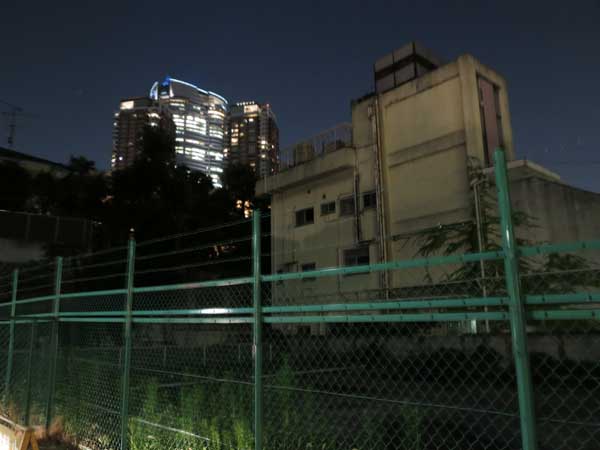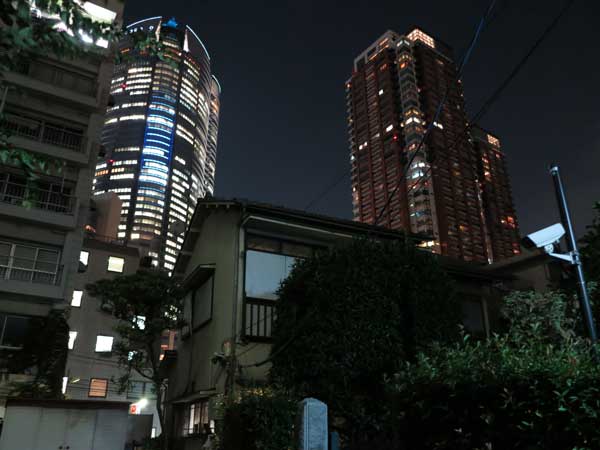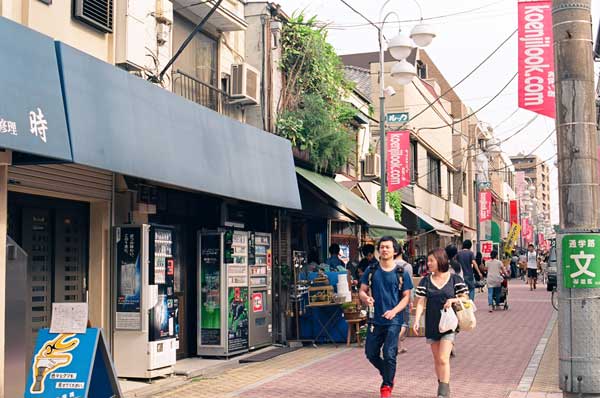
東京には、新しい開発に譲らない小さな建物もあります。昭和時代のMadam K ハンバーガーのサインが残っています。
It’s fun to see the small Tokyo hold-outs that refuse to become integrated in new developments. Long live, Madam K hamburgers.

柿の木と昭和時代風の窓は、大雪の下で魔法にかけられたように見えます。
The Showa-era home and its old persimmon tree I always pass on the pedestrian path look magical under thick snow.

六本木ヒルズの後ろに、まだ古い工場や昭和時代の住居が残っています。
In the shadow of Roppongi Hills, one of Tokyo’s most expensive neighborhoods, there are still old factory buildings, Showa-era two story houses, and even empty lots alive with weeds. This mix of scale, land usage, and non-design is delightful.


日本語では「パワーショベル」と言いますね。昭和時代の家にさようなら。
Living in Tokyo you become used to the continual process of demolition and new construction. Not the ten or twenty year boom and bust cycles I’ve seen in San Francisco and New York City. Even in the perpetually shrinking Japanese economy, Tokyo continues to morph and grow. The photo is from the demolition of a post-war Showa house in Nakano, a residential neighborhood. It will undoubtedly be replaced with a multi-unit structure made of pre-fab materials and slightly customized, standard layouts.
Closer to my house, I’ve seen the local liquor seller vacate his main storefront, which was replaced by a brand new 7-Eleven in less than four weeks. I watched the incredibly fast work to the interior, modernizing a 1970s storefront into the faceless, placeless space of a convenience store. They also installed enormous heating and cooling structures on the roof. I was glad to see that the liquor store owner has retained an adjacent, closet-sized space for his liquor sales. He seems to enjoy interacting with the neighbors.

Near our apartment is this older house with a deciduous tree that fills out in the summer. I love the bunches of light green pods it produces. Sadly there are not enough old houses or old trees in Tokyo. When you see this combination in Tokyo, it’s at once nostalgic and perhaps futuristic.
Ever resourceful Jason at Flora Grubb Gardens identified it by photo as a Firmiana simplex, Chinese parasol tree in English or aogiri (アオギリ) in Japanese. A quick visit to Wikipedia taught me that it’s an ornamental tree related to cacao. It’s within the same plant family as cotton, okra, hibiscus, and abutilon.

I’ve long admired this second floor, add-on garden in the Look shopping street that connects Shin Koenji and Koenji stations. It’s such a simple and bold addition to an older building.
